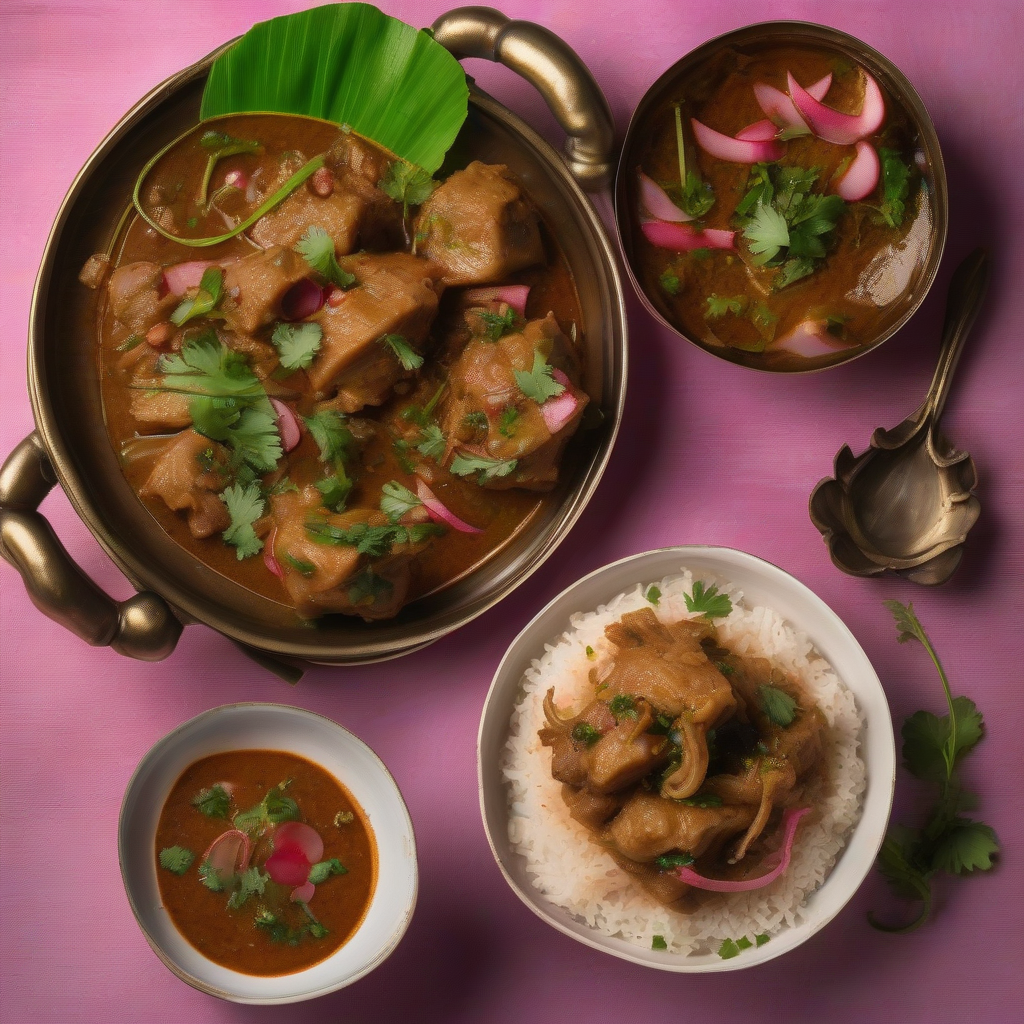Oye Hoye! Let’s Cook Up Some Phagshapa, Yaar!
Namaste and Tashi Delek, food lovers! Chef Curry Do’pyaza here, back in your kitchens with a dish that’s close to my heart – and sure to warm yours too! Today, we are diving deep into the delicious world of Phagshapa, a flavourful pork and radish stew from the beautiful land of Sikkim.
For my Sikkimese friends, you know Phagshapa is more than just food. It’s pahadi love on a plate! It’s a dish that brings families together, especially during Losar (Tibetan New Year) and other festive occasions. The cold winter months practically scream for a bowl of this hearty goodness. It is a dish that will fill your tummy and warm your soul.
A Little Trip Down Memory Lane
Phagshapa has a rich history, deeply rooted in the culinary traditions of Sikkim and the Tibetan community. It’s a testament to the resourceful nature of mountain cuisine, using simple ingredients to create a dish bursting with flavour. Passed down through generations, each family has their own special touch, making every bowl of Phagshapa a unique experience.
Get Ready to Cook!
Preparation Time: 20 minutes
Cooking Time: 60 minutes
What You’ll Need (The Ingredients List)
- 500g Pork, cut into small, bite-sized pieces (preferably with some fat – charbi is key!)
- 500g Radish (Mooli), thinly sliced
- 2 medium Onions (Pyaaz), finely chopped
- 2-3 Green Chillies (Hari Mirch), slit lengthwise (adjust to your spice level!)
- 1 inch Ginger (Adrak), grated
- 4-5 cloves Garlic (Lahsun), minced
- 2 tablespoons Vegetable Oil (Tel)
- 1 teaspoon Turmeric Powder (Haldi)
- Salt (Namak) to taste
- Fresh Coriander Leaves (Dhania Patta) for garnish (optional)
Let’s Get Cooking! (The Step-by-Step Guide)
- Pork Power: In a large pot or kadhai, add the pork pieces. Add just enough water to cover the pork. Bring it to a boil and then simmer for about 20-25 minutes, or until the pork is partially cooked and tender. This step helps to render some of the fat and makes the pork more flavourful. Drain the water and set the pork aside. This is a critical step.
- Sizzle Time: Heat the vegetable oil in the same pot. Add the chopped onions and sauté until they turn a beautiful golden brown. This is the foundation of our flavour, so don’t rush it!
- Spice Magic: Add the grated ginger, minced garlic, and slit green chillies to the pot. Sauté for another minute until the raw smell disappears and your kitchen is filled with an aromatic fragrance.
- Colour Pop: Add the turmeric powder and sauté for a few seconds. Be careful not to burn the turmeric!
- Pork Reunion: Add the partially cooked pork to the pot and sauté for 5-7 minutes, allowing it to brown slightly and absorb the flavours of the spices.
- Radish Riot: Add the thinly sliced radish to the pot and mix well. Sauté for another 5-7 minutes, until the radish starts to soften slightly.
- Simmer Down: Add enough water to just cover the pork and radish mixture. Bring it to a boil, then reduce the heat to low, cover the pot, and simmer for about 30-40 minutes, or until the pork is completely tender and the radish is cooked through. The stew should thicken slightly as it simmers.
- Taste Test: Season with salt to taste. Remember, taste is subjective, so adjust according to your preference.
- Garnish Glam: Garnish with fresh coriander leaves (if using) before serving.
Chef Curry’s Top Tips for Phagshapa Perfection
- Fat is Flavour: Don’t skimp on the fat! The pork fat renders down and adds richness and depth to the stew.
- Radish Variety: You can use different types of radish for this dish. White radish (Mooli) is the most common, but you can also use red radish or even daikon radish.
- Spice it Up: Adjust the amount of green chillies to your liking. If you like it extra spicy, you can add a pinch of red chilli powder as well.
Phagshapa Your Way: Cooking Method Variations
- Pressure Cooker: For a quicker version, you can cook the Phagshapa in a pressure cooker. After sautéing the ingredients, add the water and pressure cook for 3-4 whistles.
- Slow Cooker/Crockpot: For a hands-off approach, you can cook the Phagshapa in a slow cooker. Sauté the ingredients as directed, then transfer everything to the slow cooker. Cook on low for 6-8 hours or on high for 3-4 hours.
- Oven: You can also bake this in the oven. Sauté the ingredients as directed, then transfer everything to an oven-safe dish. Cover and bake at 350°F (175°C) for 1.5-2 hours, or until the pork is tender.
- Induction Stove/Gas Stove: The recipe works well on both. Just adjust the heat as needed.
Note: I do not recommend using a microwave or air fryer for this particular dish.
Goodness in Every Bowl: Nutritional Information (Approximate)
- Calories: 350-400 per serving
- Protein: 30-35g
- Fat: 20-25g
- Carbohydrates: 10-15g
Note: This is an approximate estimate and may vary depending on the specific ingredients and cooking methods used.
Serving Suggestions
Phagshapa is best served hot with steamed rice or roti. It also pairs well with a side of dal or a simple vegetable stir-fry. And of course, a dollop of homemade achar (pickle) never hurts!
Your Turn to Cook!
So there you have it, folks! My version of delicious, comforting Phagshapa. Now it’s your turn to put on your aprons, gather your ingredients, and bring this flavourful dish to life in your own kitchens. I know you will enjoy this delicious recipe.
Try this recipe at home and share it with your friends and family. Happy cooking, and remember to always cook with love!
Until next time,
Chef Curry Do’pyaza signing off!
